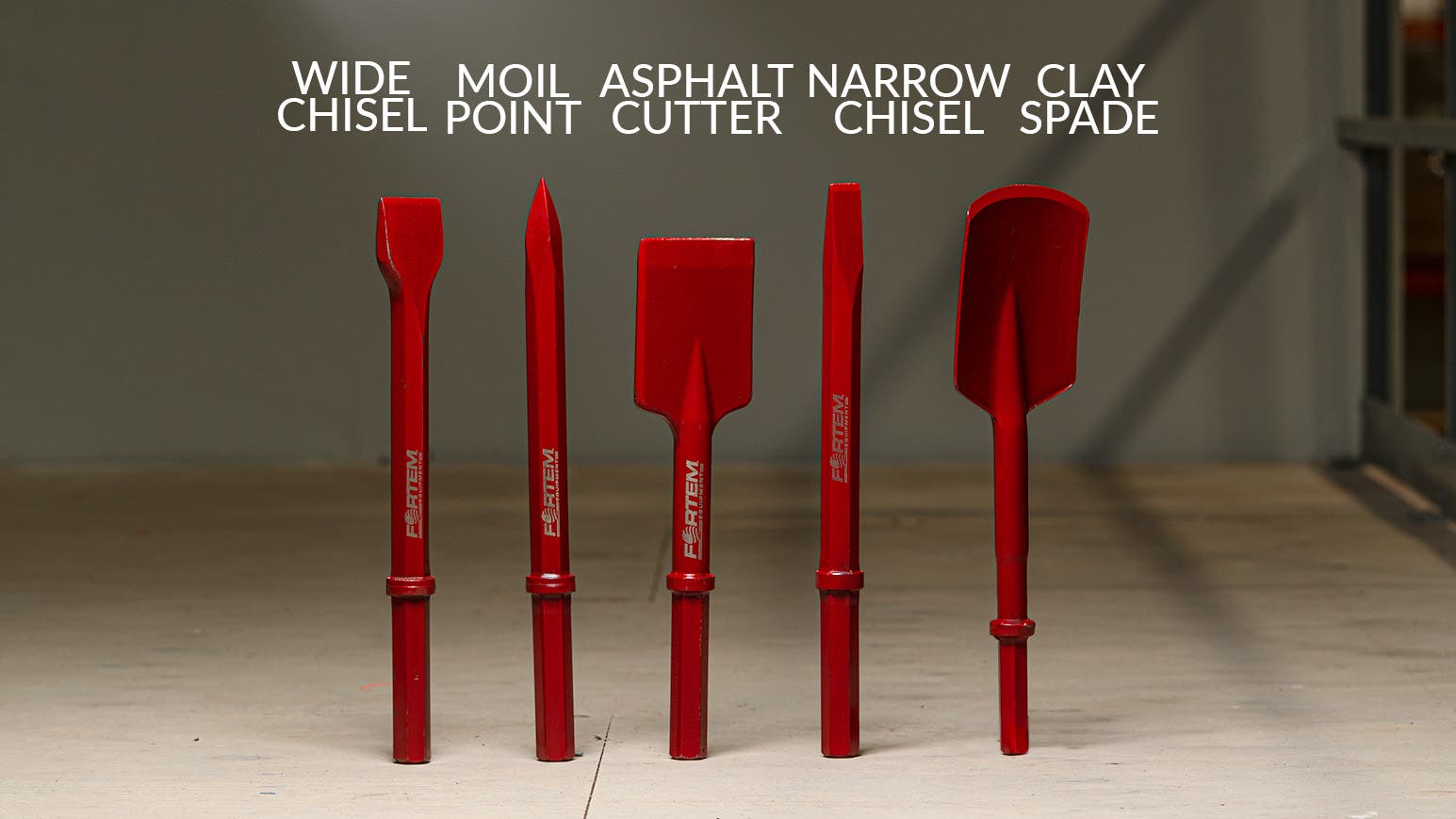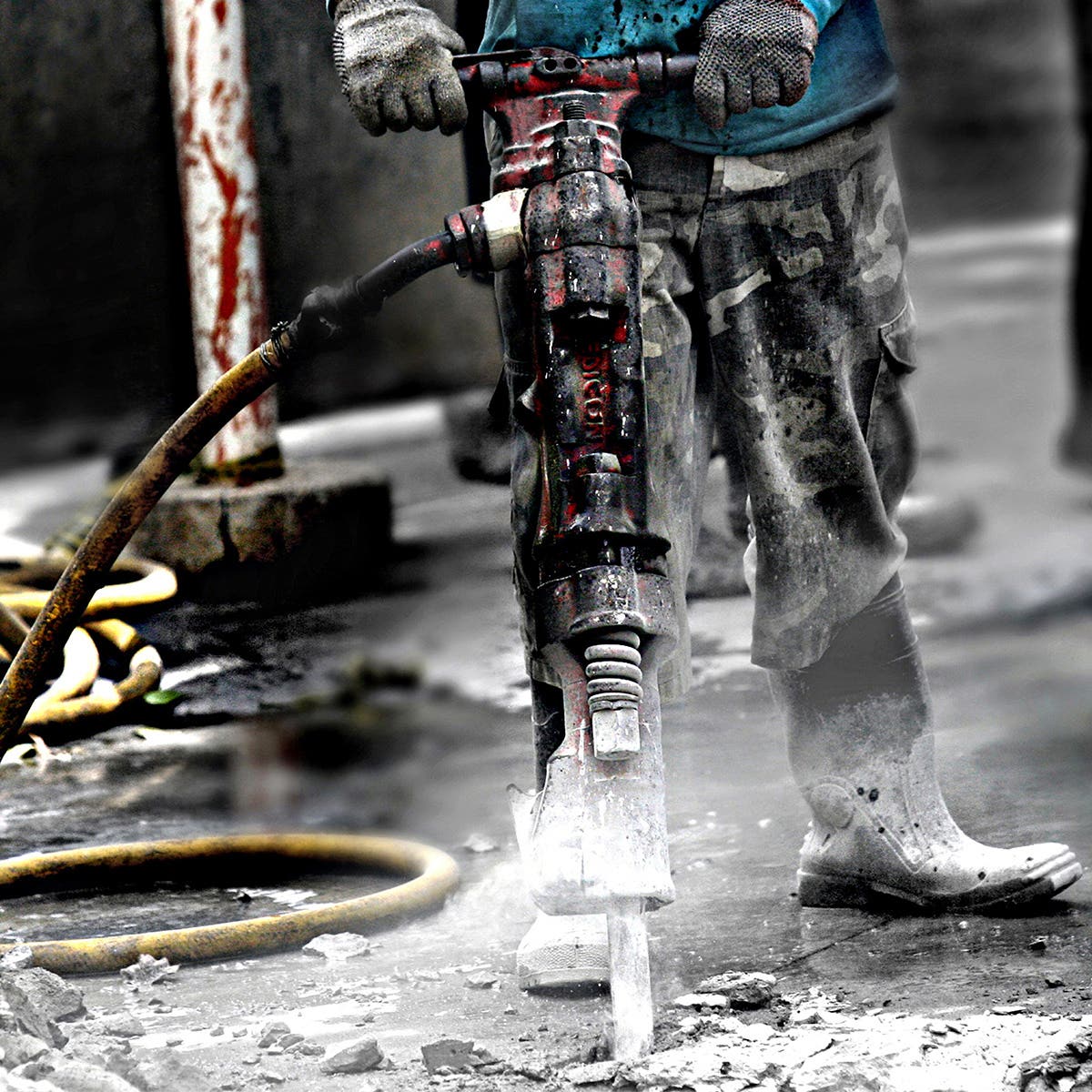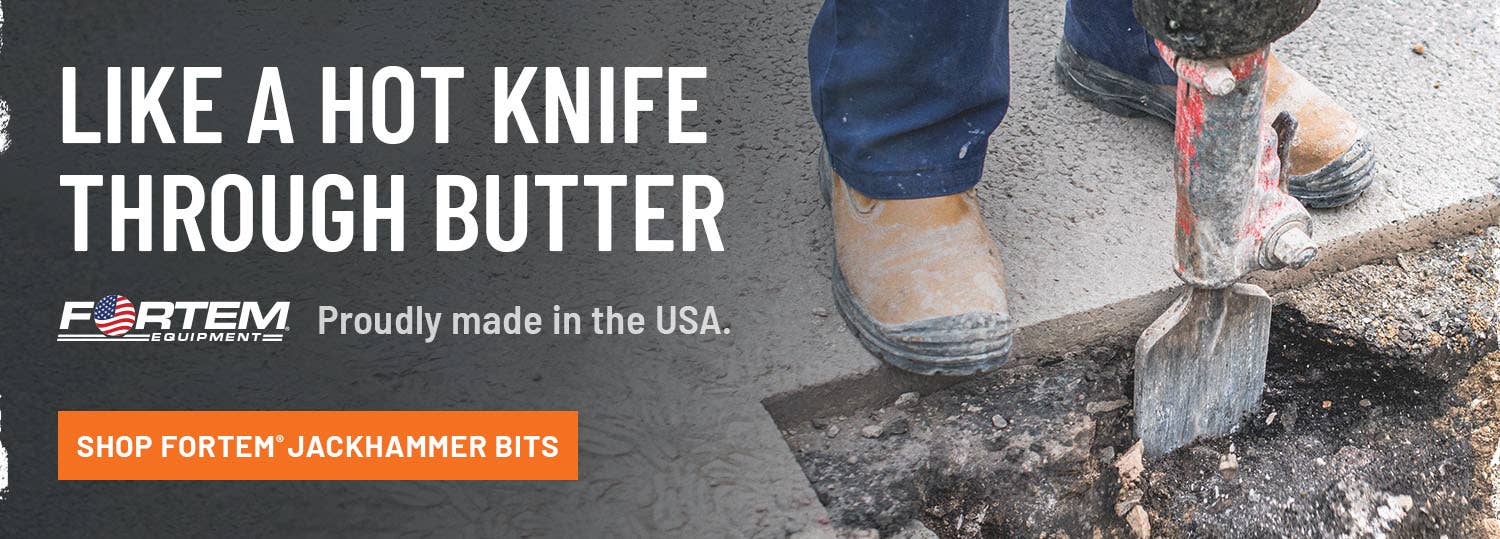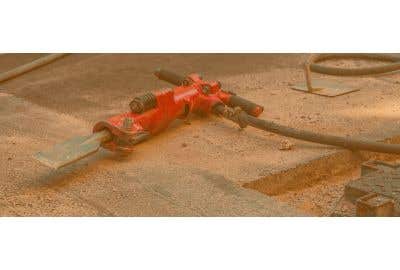*Disclaimer*
The information contained on this page is for promotional and informational purposes only. All equipment should be used by trained professional tradesmen who have been trained how to use the equipment described on this page, and understand the risks of their work. PowerPak assumes no responsibility for errors or omissions in the use or misuse of any product purchased. In no event shall PowerPak be liable for any direct, special, indirect, consequential, or incidental damages or any damages whatsoever, whether in an action of contract, negligence or other torts, arising out of or in connection with the use of this information or the contents of this page. PowerPak reserves the right to make additions, deletions, or modifications to the contents on this page at any time without prior notice.
Table of Contents
It’s everyone’s favorite tool to watch and least favorite tool to hear. The jackhammer is one of the most iconic construction industry tools. Watching a road crew demolish stretches of sidewalk or roadway with a jackhammer is always an addictive sight. It's tough to stop watching.
They’re powerful, heavy, dangerous pieces of equipment. In the wrong hands, they could do a lot of damage. Well, I guess in the right hands, they SHOULD do a lot of damage, but you know what I mean. With any tool that produces this much force and power, proper precaution, planning, and safety measures must be taken before use.
So, before you get hammering, let’s go over some of the basics.


Choosing the Right Type of Jackhammer
Picking the right type of jackhammer is not that hard. Each type of jackhammer has limitations, and you just need to pick the option with limitations that don't affect your project. We cover the four types of jackhammers: Pneumatic (air powered), Hydraulic, Electric, and Gas Powered.
Pneumatic jackhammers are a great place to start because it's what we see most often on utility and infrastructure jobs. You need a compressed air source and an air hose to operate these jackhammers.
We offer a 90lb Pneumatic Jackhammer. These are popular because they are reliable, comparably lightweight, and powerful. To operate one of these, you need a compressor capable of outputting a minimum of 90 PSI. Most of the time, you'll see workers using a tow behind compressor to operate a range of air-powered tools.
The downside to a pneumatic jackhammer is that you are tethered with the hose. Most air hoses are 50ft or 100ft. If you’re connected to a tow behind compressor, and your work goes beyond your hose, you’ll need to move the truck and compressor. Worse yet, if you can’t get the compressor close enough, you might just be out of luck.
Hydraulic jackhammers are similar to pneumatic. You've got the jackhammer connected to a hydraulic pump with a hose. You can find hand-operated hydraulic jackhammers, but for the most part, these are a more popular option for excavating equipment that already has hydraulic lines.
In addition to the limitations of the pneumatic jackhammer, hydraulic jackhammers have a couple more downsides. First, they tend to be heavier. Jackhammers are heavy tools. Adding a fluid-powered system doesn't help. The bigger issue is stand-alone hydraulic pumps aren't as readily available as air compressors. Often a Jobsite will already have an air compressor for all the other tools. With a hydraulic jackhammer, you will likely need to bring a pump just for that tool.
Electric jackhammers are quickly growing in popularity. With the rapid progress in electric motor technology, these jackhammers can now match the power of all the other jackhammer options while remaining lightweight and quieter. We predict in the coming years, we will see more and more manufacturers pushing electric jackhammer options.
There isn't much to explain with electric jackhammers. They operate the same as any other plug-in power tool. You need a power source which could include a generator or AC outlet. As you can imagine, the big limitation revolves around being tethered to that power cord. If you're plugged into a tow-behind generator, you're in the same predicament as the pneumatic jackhammer.
Gas-powered jackhammers break the mold. This is the only jackhammer option that is not tethered to a stationary power source. Gas-powered units operate completely independently and produce as much power as any other option. Sounds perfect, right?
Not so fast. Having an onboard gas tank makes these jackhammers one of the heavier options. And although gas-powered jackhammers aren't tethered, they aren't exactly a "go anywhere" option. Gas motors produce exhaust, so you can't use these on indoor projects or in confined spaces.
And, of course, gas-powered jackhammers are loud. All jackhammers are loud by nature, but the addition of an onboard engine pushes the loudness factor to a new level.
So, picking the type of jackhammer is pretty easy. You just need to ask yourself if you will work indoors vs. outdoors and what power sources are available.


Choosing the Right Bit for the Project
If you’ve picked your type of jackhammer and the specific jackhammer model you'll be using, the next thing you will need to do is figure out the size of the jackhammer shank. The shank size will usually be indicated somewhere on the jackhammer. If not, you can look up the make and model.
At PowerPak, we primarily carry 1-1/4” bits and 1-1/8” bits. Those are two very common shank/bit sizes for construction-sized jackhammers. Once you've established your bit size, you'll need to choose a type of jackhammer bit. There is a large variety of jackhammer bits; we will focus on the options common in utility and infrastructure work.
When people think of jackhammers, they think of demolishing concrete, pavement, rocks, and many other surfaces. Not every jackhammer bit is made for demolishing. If you set out to break some hard surfaces into removable pieces, you will need a chisel bit, and there is more than one type of chisel bit.
Moil point chisel bits are the go-to option for a lot of workers. These chisels come to a single point, like a spear, and are great at directing the full force of the jackhammer into a small area, giving it optimal braking power. They are simple in construction and very durable.
Narrow chisel bits come to a flat point, reminiscent of an actual chisel. The force is distributed to a wider area than the moil point chisels, allowing the worker to break apart bigger chunks and giving a little more control.
Wide chisel bits are what they sound like. It's the same as a narrow chisel but wider. Workers often use the wide base of these chisels to push and pry broken rumble out of the way. Obviously, care needs to be taken when using a bit for prying because bits can break.
Another application for jackhammers is for cutting into asphalt surfaces. This is common for utility workers that need to access buried utilities under roadways. They will use a jackhammer to cut a straight line around the buried utility, then break up the asphalt over the utility and dig it up. The jackhammered line prevents unnecessary damage and limits the amount of roadway that needs to be repaired after the utility work is complete.
An asphalt cutter is an ideal bit for that job. These bits are specifically designed for cutting asphalt. Don't use them on cement, concrete, rocks, or other surfaces. Using any bit on a surface that it is not designed for will damage or destroy the bit.
Operating a Jackhammer
The actual jackhammer operation is very intuitive. After it's connected, the handle will have a trigger that turns the jackhammer on. Some electric models will require the unit to be powered on for the trigger to work. Before using the jackhammer, you'll want to ensure the bit is locked in. If you are completely new to jackhammers, you should attend safety training before using the jackhammer.


When using a jackhammer for any purpose, you should never put your weight on it. You run the risk of the jackhammer slipping and you falling on top of it. Let the jackhammer do the work. The operator only needs to apply enough pressure to keep the jackhammer positioned in the right direction.
First-time users often think the jackhammer should be operated as vertically as possible but most quickly learn that is incorrect. The jackhammer should lean back slightly towards the operator, ideally 20-30 degrees.
Best methods depend on the project and user, but workers generally like hammering in rows. Working in a specific direction helps control the direction of the cracking surface. This allows you to quickly break manageable pieces of debris instead of jackhammering randomly all over the place, which will take more time and yield varying sizes of debris.
Dust mitigation is something that is often overlooked. Over the past decade, has set its sights on reducing the amount of silica dust inhaled by workers. A big part of that is controlling and containing concrete demolition dust. Two popular dust control options include the wet and vacuum methods.
The wet method works the same as wet cutting. The area that is being jackhammered is continually sprayed with water to keep dust from getting into the air. The vacuum method requires a special attachment for the jackhammer that attaches a vacuum that collects the dust as the jackhammer works.
And finally, remember that a jackhammer is an aggressive tool, and prolonged use will take a toll on your body. Proper ergonomics are very important with tools like these. Make sure your stance doesn't create additional strain on your body, and hold the handles so that the jackhammer is doing most of the work.
Wear Personal Protective Equipment
Jackhammer safety goes beyond the tool itself; protective wear is just as important as the actual jackhammer and accessories. Remember, you are operating a very dangerous tool, and choosing not to protect yourself from the jackhammer could lead to serious and irreversible injuries.
Starting at the top, you're going to need hearing protection. Jackhammers are loud, and prolonged exposure to high noise levels will damage your hearing. The human ear should not be exposed to more than an average of 85 decibels per working day.
The average pneumatic jackhammer is loud and will produce 110+ decibels at the operator's ear. The level can be reduced by using a muffler or a quieter electric jackhammer. The noise level will still be well over 100 decibels. If exposed to high noise levels for long periods, it is recommended that the operator wear dual hearing protection. So, a combination of ear plugs and ear muffs.
Safety glasses will keep flying debris from permanently blinding you and prematurely ending your days operating a jackhammer. When picking a pair of safety glasses, you'll want to ensure they provide enough impact protection. You'll want to look for ANSI Z87+ impact-rated glasses, and having a D4 dust rating isn't a bad idea either.
Respirators are a must, even if using the wet or vacuum method for dust mitigation. Depending on what you are jackhammering, you will likely need an actual respirator with P100 filters and not just a cloth mask.
Work gloves will protect your hands from any flying debris, and you can opt for anti-vibration gloves for added comfort and reduces strain on your body.
Steel-toed shoes to protect your feet from any jackhammer mishaps. Having foot protection is also important if a block of concrete or other heavy object falls on your foot.
Anyone should wear personal protective equipment near the jackhammer, not just the operator. If jackhammer operator is wearing ear plugs and earmuffs, and you are working a few feet away all day. You're going to damage your hearing if you don't also wear hearing protection.
Enjoy the Experience
After you’ve done your due diligence, you’ve got the hang of operating the jackhammer, and you’ve taken all the safety precautions, there’s no rule against admitting it’s fun. Jackhammers are a very satisfying tool that always catches the attention of a passerby. Everyone else wants to get in there and give it a try, so enjoy the fact that you’re the operator. Just don't get over-excited and make a mistake that you'll regret. Safety first.
Be sure to visit our website to shop our selection of jackhammer accessories, and contact us if you need any assistance.




